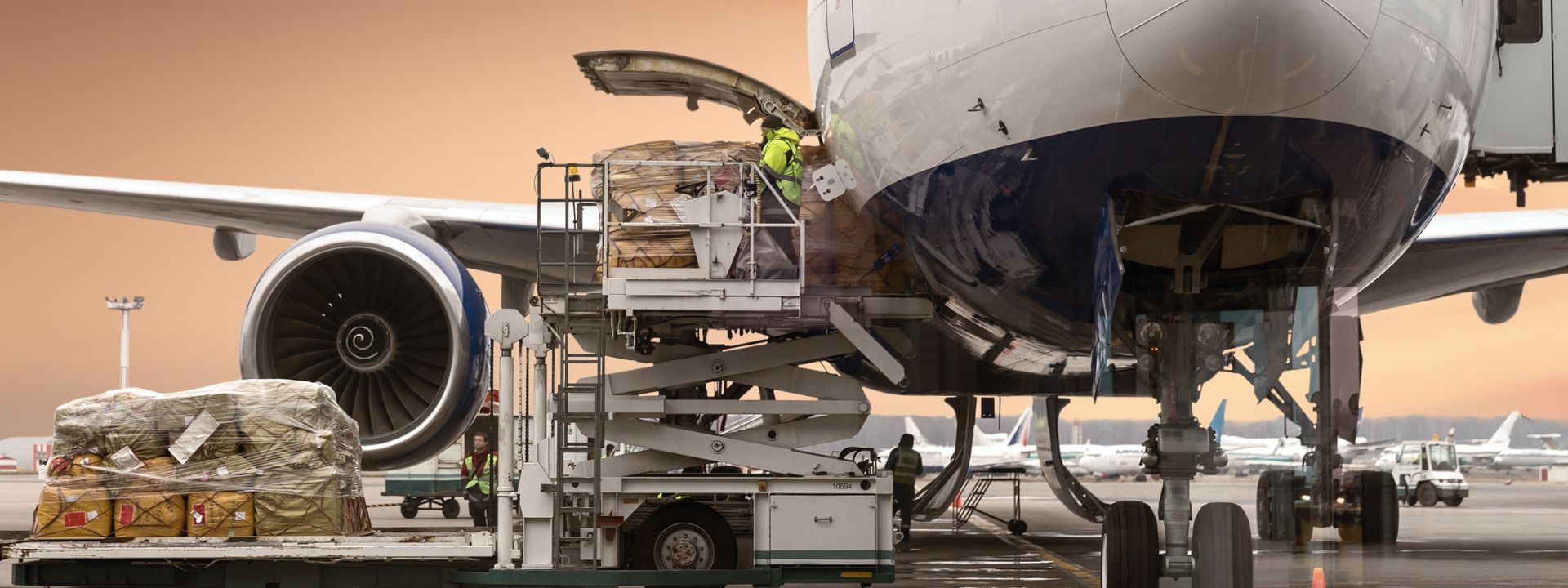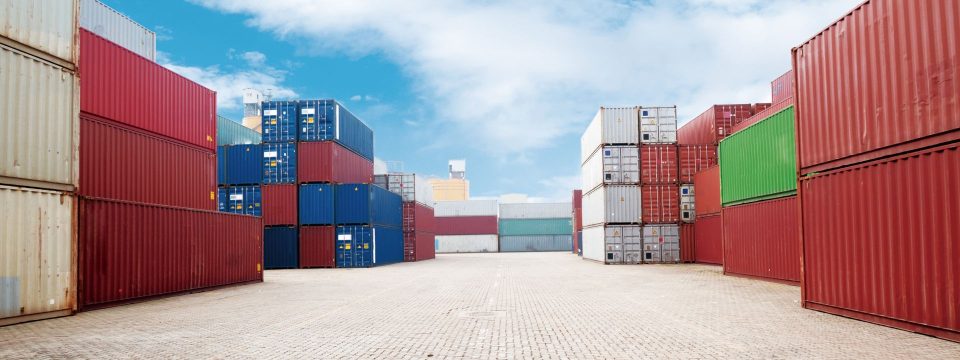Packing Cargo for Air Freight: How to Prepare Your Shipment
October 28, 2022 Air Freight

When shipping goods internationally, it’s hard to overestimate the importance of properly packing your cargo. This is especially the case when you’re packing goods for air freight.
Recent statistics indicate that Australia’s air freight trade volume has been as high as around 1.1 million metric tonnes per year, with a value of about $110 billion.
Although airlines have massively cut capacity, and air freight rates have skyrocketed, that doesn’t mean you should forget about proper packing.
Inadequate packaging is a prevalent cause of cargo damage, and a major factor underlying many insurance claims. So it is critical that you’re ready to prepare your shipment with an adequately packed consignment.
Below, we’ll outline everything you need to know about packing cargo for air freight, so that you can rest assured your cargo will travel across the skies to its destination in one piece.
Why is packing important for air freight?
Packing is essential when transporting goods via air freight to ensure your items are safely carted without being damaged.
Poorly packed containers have been estimated to result in over $6 million in yearly damages to supply chains. TT Club also estimated that 65% of damage to cargo is due to inadequately packed, secured or blocked cargo.
Just consider the movements of your cargo when it’s being shipped by an aircraft – there’s handling by ground personnel, interactions with vehicles such as trucks and forklifts and of course turbulence on board the aircraft itself.
Your consignment also might not be delivered on one flight. Instead, it may pass through multiple handling points at different airports before reaching the final destination.
Correct packing (and, of course, labelling) will also ensure the air carrier, and the ground crew, clearly understands if there are any restrictions around your cargo. This may include, for example, dangerous goods, ‘top load only’ or fragile goods.
It’s important to remember that any cargo movement within a package is at risk of being damaged during transit. The tighter the packing, the more secure it is, and so the less likely it’ll suffer damage on the journey.
Top Tips for Packing Air Freight
Below, we’ve outlined our tips to follow when packing air freight. Putting these steps into practice can help you ensure the security and safety of your cargo.
Before reading on, you may like to learn more about how the air freight process works, step-by-step.
1. Know restrictions based on your cargo dimensions
Cargo can be shipped in a unit load device (ULD), as a palletised shipment, or as loose cargo when shipping via air freight.
Navigating the wide range of restrictions based on cargo dimensions (height, length and width) can be simplified with insights from a professional air freight forwarder.
The maximum dimensions for standard air freight is 2.44 x 3.15m. You can certainly transport longer or wider cargo, but these may need to be packed on special equipment.
But maximum height will also be determined by the craft type as follows:
2. Know air security regulations
Air freight security regulations define that your cargo must be examined prior to export.
Your cargo may be inspected:
- As a piece-level examination – where each individual box, carton or other item is inspected by a Regulated Air Cargo Agent (RACA).
- Consolidated form – where homogeneous cargo is packed on pallets, boxes are stacked and wrapped in plastic or in unit load devices (ULDs).
- As an approved Known Consignor – air cargo originating from these companies does not require further examination prior to uplift onto an aircraft.
As a general example, if your cargo is palletised, it will need to fit within the following dimensions to go through an x-ray machine:
1.20m x 1.20m x 1.53m LWH, max 1000kg CW per pallet.
It is critical that cargo screening through a metal detector is on plastic or cardboard pallets, as wooden pallets will likely have nails.
You can read more about the latest changes to air freight security requirements right here.
3. Use sturdy boxes
As with seafreight shipping, we strongly recommend using strong and sturdy boxes to store your cargo when transporting by air.
You’ll need to keep in mind the major factors of your cargo when packing it into a box:
- Weight – the type of aircraft your cargo travels on may have its own weight restrictions per cargo, which will in turn depend on the plane’s maximum take-off weight (MTOW).
- Moisture – consider all the factors that may cause moisture damage to your cargo whether it be humidity, leaks or shifts in temperature.
- Pilferage – there is always a risk that your goods will be stolen (we always recommend getting marine insurance). When transporting on aircraft, we recommend you use plain boxes without showing any brands or logos.
4. Use Double walled boxes
Double-walled or triple-walled boxes are sturdy boxes with layers of stacked corrugated cardboard. When you require further protection for particularly fragile cargo, these boxes are a preferred option.
These boxes are also robust enough to be stacked and will provide the best protection for your goods.
Note that strong, plastic totes will also be acceptable.
5. Use a tape gun (and high-quality packing tape)
You want your cargo to be secured in its packaging bound together with strong (not cheap) packing tape.
Make sure, therefore, that your tape is of good material and design.
Poor tape is more likely to become less sticky during the journey, increasing the chances of your boxes falling apart.
6. Label cargo clearly and as required for your type of cargo
It is critical that you are completely across the labelling requirements of each type of cargo you are carting overseas via aircraft.
If fragile or top load only, for example, clearly mark these details on the packing. The same is true for dangerous goods, which must be labelled in accordance with international regulations.
You can learn much more about this topic in our article about cargo labelling.
What happens if your cargo is not packaged correctly?
If your cargo is not packed properly, there’s a risk that:
- Your cargo will be damaged
- Your cargo will be unsafe for transportation
- Your cargo may be rejected by the carrier, causing expense and delays for you.
Cargo can get damaged
If your cargo is not properly packed, then it may simply be unsafe to be transported by air. This is especially the case for hazardous chemicals and dangerous goods. Packing instructions for dangerous goods typically require United Nations performance-tested specification packaging (if not shipped in Limited Quantities).
If you fail to pack properly, the consequences if a consignment is delivered by air can be dire.
In 2014, for example, it was discovered that three undeclared packages of aircraft paint were being shipped on a FedEx aircraft by Texas-based company Aeroplus Interiors. That paint started to leak, thereby creating a significant risk to safety as a hazardous material.
The U.S. Federal Aviation Administration alleged that the contents were not labelled or packed according to hazardous materials regulations, and the company faced a $57,400 fine. The packages were said not to be proper for shipping and did not adequately protect against releasing the hazardous material.
Below, we’ll outline a case study of how inadequate packaging of lithium batteries, in particular, can lead to tragic results.
Case study: Lithium-ion batteries
There are strict rules about how lithium-ion batteries must be packed. Their poor packing, and their subsequent cartage on an aircraft, can have catastrophic consequences.
For many years, the bad packing of goods such as rechargeable batteries have raised huge concerns for airliners. Lithium batteries are prone to overheat and can ultimately cause quite dramatic fires.
In 2010, for example, a UPS Boeing 747 (a cargo aircraft) in the United Arab Emirates crashed. A fire had disabled the aircraft’s oxygen system, smoke filled the cockpit, and the pilots were unable to see. The Boeing 747-44AF crashed near Dubai and both members of the crew lost their lives.
The UAE’s civil aircraft authority investigated the incident, tracing the fire back to lithium batteries and other combustible materials which had been stored in the cargo hold.
Following the disaster, UPS started to use fireproof containers for their cargo.
The shippers in Hong Kong, the report noted, “did not properly declare these shipments” nor did they provide test reports as recommended by the United Nations.
Ten years later in 2020, UPS was once again in the spotlight and was accused by the U.S. Federal Aviation Administration (FAA) for shipping improperly packed lithium batteries.
We therefore cannot overestimate the importance of proper packaging (especially with dangerous cargo). Failure to do so can have tragic consequences. Not only can the cargo be damaged or destroyed, but human beings can ultimately lose their lives.
Cargo may be rejected
Cargo may ultimately be rejected by an aircraft carrier at origin if it arrives poorly packaged. This leads to further expenses and delays.
Not only does the shipper have to expend time, money and resources in order to ensure the consignment is properly packed. They will also experience delays throughout their supply chain, and the customer overseas may not receive an order by the scheduled date.
Read more here to learn about how you can factor in delays throughout your supply chain.
An expert freight forwarder will help you pack your goods
There’s a lot that can go wrong on aircraft, especially when packing goods for your customers overseas.
To minimise the chances of those wrongs greatly affecting your supply chain, engage a professional freight forwarder who can help you ensure your cargo is packed properly, safely and in accordance with any applicable regulations.
That way, you can save on costs, avoid delays and get your goods to their final destination as quickly and efficiently as possible.
Our world-class air freight specialists have expert knowledge and unmatched experience when it comes to air freight.
Get in touch with us to learn more about packing your cargo and preparing your shipment for the travels ahead.
Request A Quoteor call us on 1300 227 461

We Consult. We Plan. We Deliver.
- CONSULT – We discuss your specific needs.
- PLAN – We develop a bespoke tailored plan that is cost-effective & efficient.
- DELIVER – We manage your shipment and keep you updated from beginning to end.


